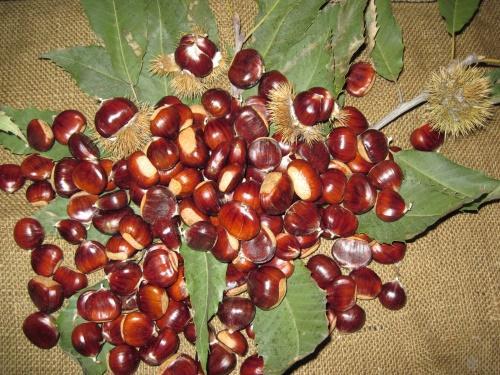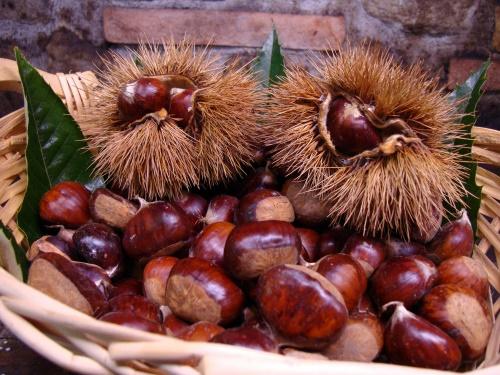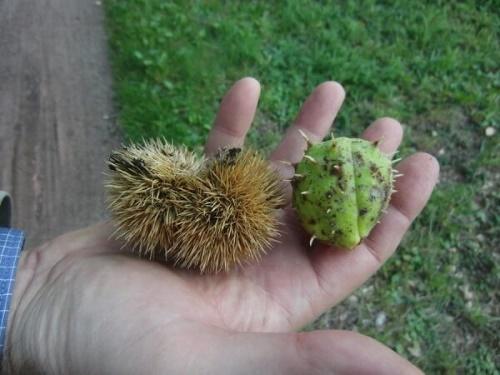Can chestnuts be eaten raw and which ones?
 In Russian cuisine, fried chestnuts cannot be found in any recipe, and it is not surprising, because this dish came to us from distant countries. And if you cannot surprise real gourmets with baked or fried fruits, then the question arises for beginners: is it possible to eat chestnuts raw. These amazing brown nuts are packed with nutrients. In addition, they are very high in calories (180 kcal per 100 g of fried product), but at the same time less fatty than the nuts themselves. All this is due to saturated fats, the amount of which is only 10%, and even those are quickly processed by the body.
In Russian cuisine, fried chestnuts cannot be found in any recipe, and it is not surprising, because this dish came to us from distant countries. And if you cannot surprise real gourmets with baked or fried fruits, then the question arises for beginners: is it possible to eat chestnuts raw. These amazing brown nuts are packed with nutrients. In addition, they are very high in calories (180 kcal per 100 g of fried product), but at the same time less fatty than the nuts themselves. All this is due to saturated fats, the amount of which is only 10%, and even those are quickly processed by the body.
Everyone knows that during the cooking process, especially frying, the calorie content of nuts increases. In addition, as a result of heat treatment, some of the nutrients are lost. Therefore, for those who monitor their diet, it is important to know whether it is possible to do without this procedure.
Can chestnuts be eaten raw

Of all the nuts, only chestnuts contain vitamin C.
In terms of benefits, fresh fruits will bring it more than after cooking, so you can eat chestnuts directly from the branch. But the taste will not be the same and few people like such a dish. Do not forget that raw nuts need to be peeled by removing the peel and glossy film, and this is not easy to do. It is much easier, and even tastier, to cook fruits: fry, bake, boil in water or steam. In the latter case, you will be able to lose a minimum of the vitamin. Ready-made nuts acquire a unique taste, somewhat similar to baked potatoes, only sweetened.
Is outdoor chestnut good for food?
 In natural conditions, in parks and forests, horse chestnuts grow. These are large trees with a huge crown and beautiful inflorescences - candles in which fruits in a prickly shell are born. This species is purely decorative and is not suitable for food. Even boiled, it retains a bitter taste and, instead of benefit, can only harm the body.
In natural conditions, in parks and forests, horse chestnuts grow. These are large trees with a huge crown and beautiful inflorescences - candles in which fruits in a prickly shell are born. This species is purely decorative and is not suitable for food. Even boiled, it retains a bitter taste and, instead of benefit, can only harm the body.
However, you can distinguish edible chestnuts from ordinary ones by the appearance of the tree and fruits:
- Edible varieties have more rounded leaves and flat buds. Have horse the foliage is carved, with a jagged edge, and the inflorescences are elongated in the form of a pyramid.
- Sowing varieties bear fruit by tying 2 - 3 fruits in a sheath of thick long thorns. The horse most often has one nut hidden under the skin with sharp sparse thorns.
The fruits of both types themselves are very similar: smooth, rich dark brown color with a bright gloss. Only a few varieties of chestnut are considered edible: Chinese, crenate, European and Asia Minor.